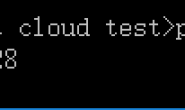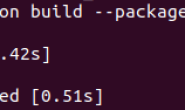本文包含了python字典的各种用法,字典在python中的重要性不言而喻
#!/usr/bin/env python # # [代码名字: Dictionaries 101] # [代码分类: Python Core] # [代码描述: Basic and not so basic dictionary operations] # [代码协议: GPL] # This snippet demonstrates how the basics on dictionaries: how to create, add, # remove items, get items, iterate, etc. # # First, let's create simple dictionary. A dictionary (called map in Java hash # in perl) is similar to a list with the difference that the key doesn't # have to be an integer, it can be anything. # # A dictionary is enclosed in curly brackets and each key is mapped to its # corresponding value with a colon. So in the dictionary below, we associate # the key Karmic with the value 9.10 and so on for the 5 pairs. # print "Create a simple dictionary" simpleDict = {"Karmic": "9.10", "Lucid": "10.04", "Hardy": "7.10", "Jaunty": "8.10", "Intrepid": "8.04"} # print it print simpleDict # # Another way to create a dictionary is to zip two lists containing the keys # and values in the same order to create a list of tuples, which we can then # pass to the dict() method to create a dictionary. # myKeys = ['Feisty', 'Edgy', 'Dapper'] myValues = ['7.04', '6.10', '6.06'] otherDict = dict(zip(myKeys, myValues)) print otherDict # # Interrogate the dictionary. It works exactly the same as with a list, with the # exception that the key is no longer an integer. # print "\nInterrogate the dictionary" # get for value for key Jaunty print simpleDict['Jaunty'] # get the length of the dictionary print len(simpleDict) # check if the dictionary contains the key Lucid print 'Lucid' in simpleDict print 'Breezy' in simpleDict # # Modify the dictionary # print "\nModify the dictionary" # add another item simpleDict['Hoary'] = '5.06' print simpleDict # oops! let's sort this out by replacing in place simpleDict['Hoary'] = '5.04' print simpleDict # update the dictionary with mappings from another one simpleDict.update(otherDict) print simpleDict # remove an item from the list (Hardy should not be in the list anymore) del simpleDict['Hoary'] print simpleDict # # Iterate over the dictionary. A dictionary doesn't enforce a natural ordering # like a list but we can still iterate over it in multiple ways. # However, note that when you iterate, the order in which the items are # retrieved is unspecified. # print "\nIterate over the dictionary" print "\nby keys" for k in simpleDict.keys(): print k print "\nby values" for v in simpleDict.values(): print v print "\nby items" # note the syntax to retrieve the key and value at the same time for k, v in simpleDict.items(): print k, '=>', v # # More interesting transformations from list to dictionary and vice versa. # List comprehension allow you to do a lot of interesting stuff, in particular # tranforming lists into dictionaries and the other way around. # print "\nList to dictionary and vice versa" # First, let's transform our dictinary into a list of tuples simpleList = [(k, v) for k, v in simpleDict.items() ] print simpleList # Create a map from a list with the list's entry as key and the index as value # This method takes advantage of another way of creating a map, using a # sequence of tuples, so in practice, we create a tuple for each item in the # list, create a list from all the tuples using a list comprehension and pass # it as argument to the dict() function cityList = ['London', 'Paris', 'New York', 'Tokyo'] cityDict = dict([(x, i) for i, x in enumerate(cityList)]) print cityDict # Create a map from a number to its square squareDict = dict([(x, x * x) for x in range(1, 10)]) print squareDict




